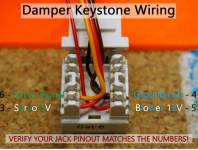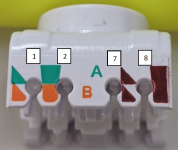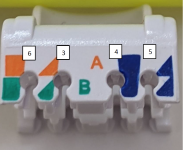I am trying to build an adapt a damper and I have bought this RJ45 socket which does not have pin numbers but does have these colour codes on each side, it seems to give two alternative schemes, A and B. I would like to avoid connecting the 12V to the servo if possible  .
.
If I connect the heatermeter to this socket via a standard RJ45 cable which of these pins should I be connecting to the servo and fan?


If I connect the heatermeter to this socket via a standard RJ45 cable which of these pins should I be connecting to the servo and fan?




